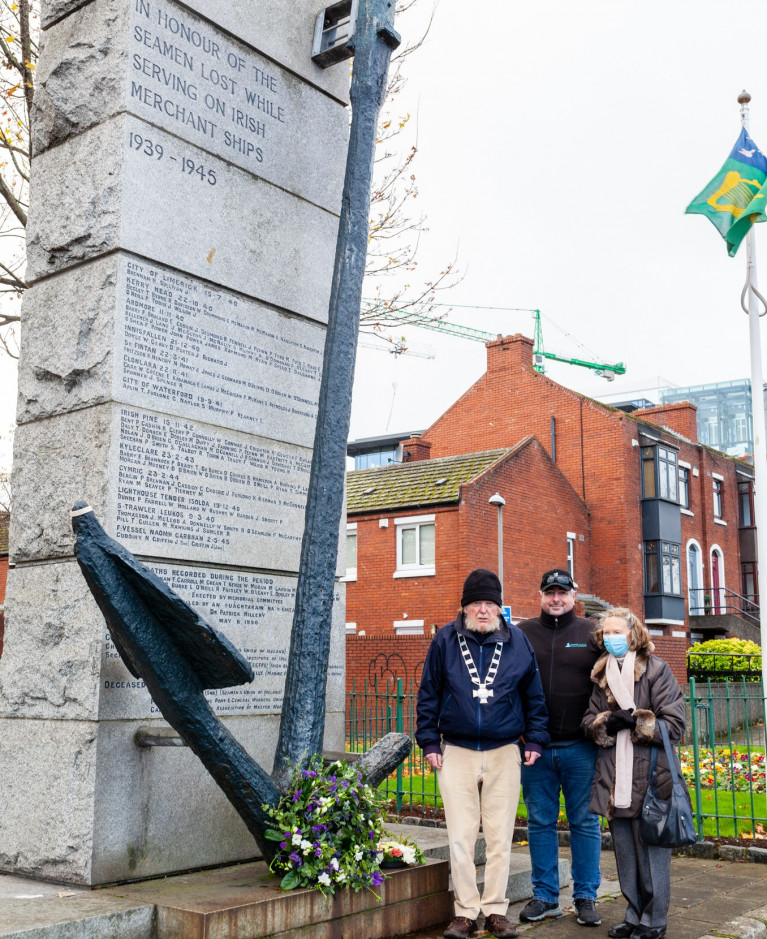Displaying items by tag: Dublin, City Quay
The annual Irish Seaman's National Memorial service this year was again cancelled given ongoing Covid circumstances, however a small low-key ceremony did take place along Dublin's south quays, writes Jehan Ashmore.
Attending the ceremony last Friday at City Quay, was the president of the Maritime Institute of Ireland, Joe Varley, who laid a wreath on behalf of the Institute at the Seafarers Memorial monument.
In addition a second wreath was laid by Rose Kearney on behalf of the Stella Maris Seafarers Mission with their club and centre located across the Liffey, on Beresford Place near to Busaras.
Normally the ceremony which is also attended by other maritime organisations, is to remember those Irish Seafarers who were lost while serving on Irish merchant ships during World War II.
The ceremony which is organised by the M.I.I., had in the previous month marked its 80th anniversary as the Maritime Institute of Ireland was incorporated during WW2 in October 1941.
Asides the role of the Institute, they opened the Maritime Museum in Dun Laoghaire in 1978 which is located aptly in the former Church of Ireland Old Mariners' Church. The atmospheric 180 year-old historic building (near the East Pier) is located opposite of the DLRCoCo's LexIcon Library.
To read much more about the history of the M.I.I. and the National Maritime Museum of Ireland which includes a gift shop and library, click here.





























































